

Halfpenny
These occur of the dates 1729 to 1739 inclusive. Proofs of the halfpenny of 1729 exist in copper, bronze
and silver. A halfpenny of 1730 is remarkable for the omission of the letter R in the king's name, which
reads, therefore, GEOGIVS. REX. This was called in afterwards, and another, with the name
correctly spelt, occurs of the same year. A bronze proof of the same date of the ordinary type was lately
in my collection and is now in that of Mr. Caldecott. The halfpenny of 1735 sometimes bears the date in
smaller figures.
Farthing
These occur of every date between 1730 and 1739, both inclusive, except that there were none issued in 1738.
The farthing of 1737 bears the date sometimes in large and sometimes in small figures. Proofs of the farthing of
1730 exist in silver and copper.
In 1740 a new copper coinage took place. The head is older, and the engraver was John S. Tanner, who about that
time was appointed Chief Engraver to the Mint in succession to Croker.
Halfpenny
These occur of the dates 1740 to 1754 inclusive, with the exception perhaps of 1741, of which year I have
failed hitherto to discover one, although a peculiar piece bearing that date and intermediate in size between
a halfpenny and a farthing was in the cabinet of the late Mr. C. H. Nash. No proof of either the halfpenny
or farthing are known. The U in the king's name on the halfpennies from 1740 to 1745
inclusive is formed in the modern fashion, but subsequently the old form of V was again resorted
to.
Farthing
The farthings occur of the years 1741, 1744, 1746, 1749, 1750 and 1754. The farthing of 1748 has also been said
to exist, but if it does it must be extremely rare. I have never seen or head of it. The U appears
in the king's name on those of 1741 and 1744, and V on those of the later years.
The forgeries of copper coins during this reign was conducted on a most alarming basis, and formed the subject of
much complaint. Petitions were presented to the King in Council, and amongst other suggestions was one to the
effect that the nominal value of the coins should be reduced by one-third, it being clear that the forgeries
were due to the great difference between their nominal and intrinsic values. No effective remedy was, however,
introduced, and the grievance continued during the early part of the next reign.
The Copper, Tin, and Broze Coinage of England
H Montagu, F.S.A, , 1893
George II
George II, 1727-1760
The first coinage (commonly called the "young head" coinage) of George II. resembles that of his father, except
that his head is turned to the left instead of to the right, and there is no linear inner circle on either side
of the coins. The warrant for the execution and issue of pieces under this coinage is dated July 21st, 1729, and
was signed by Queen Caroline, as guardian of the kingdom during the absence of the king in Germany. These coins,
which were the work of Croker, consisted of halfpennies and farthings only.
1. O. GEORGIVS. II. REX. The king's head to the left, laureate, with short curling hair.
Armour plain.
R. BRITANNIA. Figure as before, but larger in size and of bolder work. The
date in the exergue. R. 1.
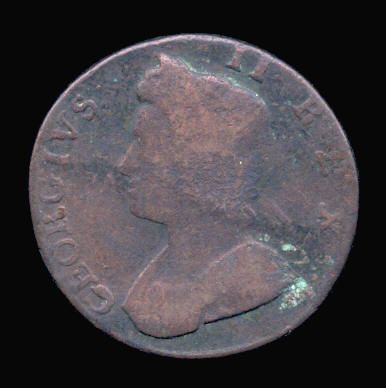
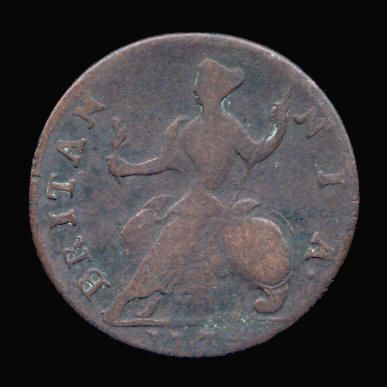
2. O. GEORGIVS. II. REX. Bust as on the halfpenny.
R. BRITANNIA As on the halfpenny. Date in the exergue. R. 1.
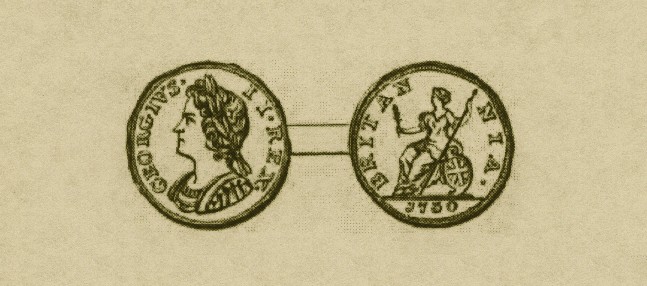
3. O. GEORGIUS. II. REX. Head with short hair as before, but the latter having more the appearance
of a wig; laureate. Armour as before
R. BRITANNIA. Figure as before, but the laurel branch with more leaves. R. 1.
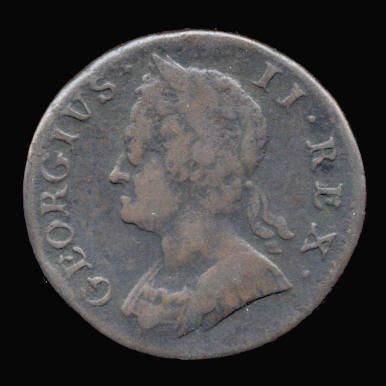
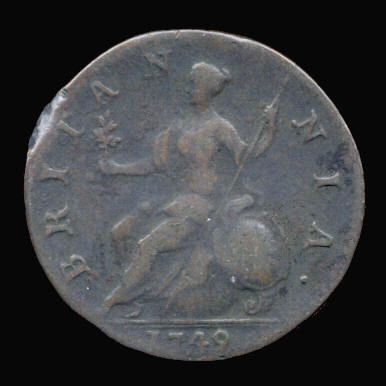
4. O. GEORGIUS. II. REX. Bust as on the halfpenny.
R. BRITANNIA. Figure as on the halfpenny. The date in the exergue. R. 1.